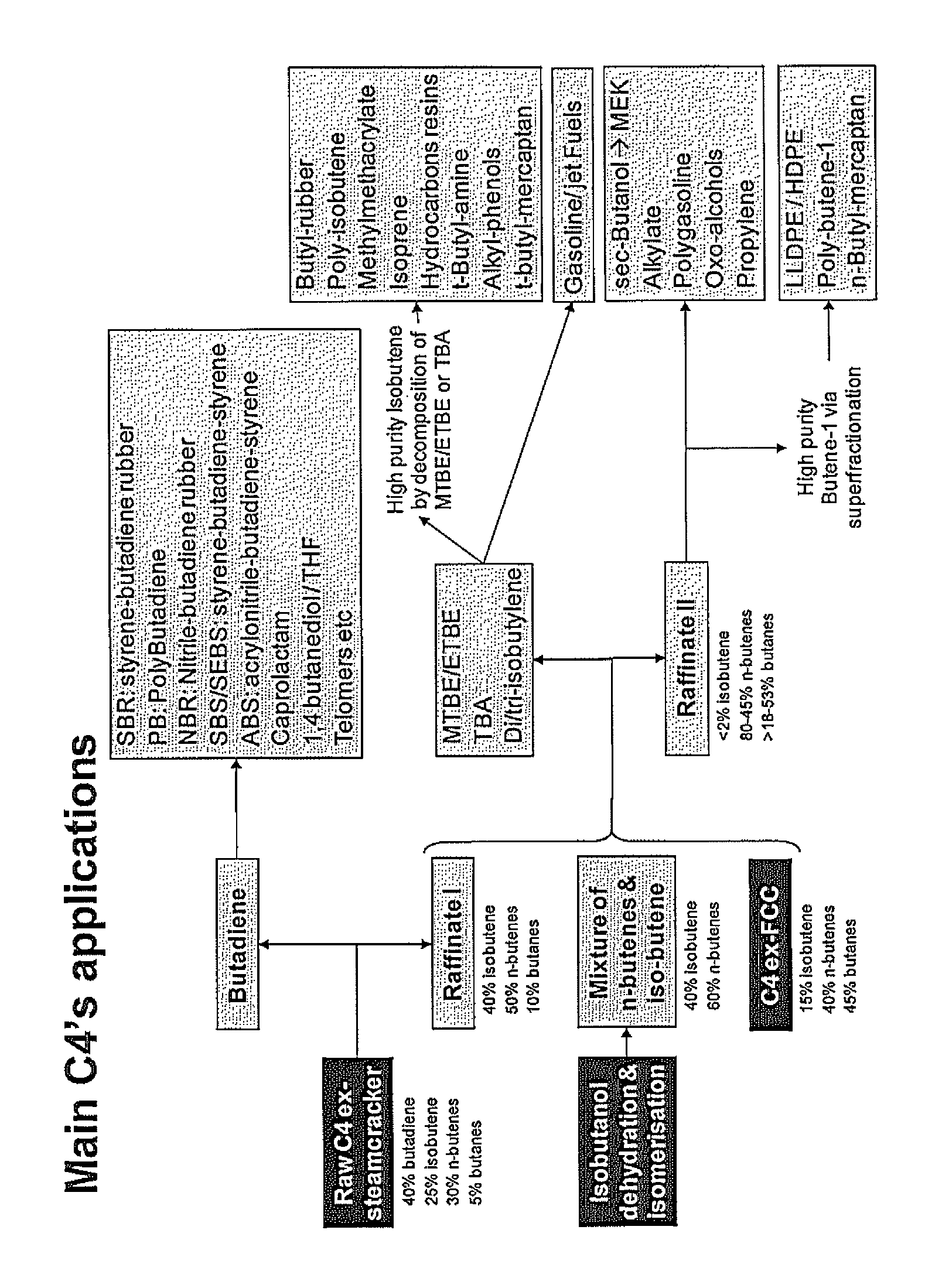Simultaneous dehydration and skeletal isomerisation of isobutanol on acid catalysts
a technology of isobutanol and acid catalysts, which is applied in the direction of hydrocarbon preparation catalysts, physical/chemical process catalysts, sustainable manufacturing/processing, etc., can solve the problems of reducing the selectivity of desired products, high second reaction (substitution or addition) and high cos
- Summary
- Abstract
- Description
- Claims
- Application Information
AI Technical Summary
Benefits of technology
Problems solved by technology
Method used
Image
Examples
example 1
According to the Invention
[0091]The catalyst used here is a crystalline silicate of the FER structure. The H-FER has a Si / Al of 33 under powder form. The catalyst is calcinated with air at 550° C. during 4 hours before formulation in pellets of 35-45 mesh,
[0092]An isobutanol / water mixture having the 95 / 5 wt % composition has been processed on the catalyst under 2 bara, at temperatures between 350 and 375° C., and with an isobutanol space velocity from 7 to 21 h−1.
[0093]In this set of operating conditions, isobutanol conversion is almost complete, with a butenes selectivity of over 95% wt, and an iso-butene selectivity of around 41-43%. Low amounts of C4+ compounds are formed.
[0094]
FEEDiButOH / H2O (95 / 5)% wtP (bara)22222T (° C.)350.0350.0350.0375.0375.0WHSV (H-1)7.312.621.021.012.6conversion (% wt CH2)100.099.489.799.899.2Oxygenates on C-basis (% wt CH2) - averageEther0.00.00.00.00.0Other alcohol0.10.10.20.10.1Aldehyde + Ketone0.10.10.10.10.1Yield on C-basis (% wt CH2) - averageParaff...
example 3
According to the Invention
[0100]The catalyst is a phosphorous modified zeolite (P-ZSM5), prepared according to the following recipe. A sample of zeolite ZSM-5 (Si / Al=13) in H-form was steamed at 550° C. for 6 h in 100% H2O. The steamed solid was subjected to a contact with an aqueous solution of H3PO4 (85% wt) for 2 h under reflux condition (4 ml / 1 g zeolite). Then 69.9 g of CaCO3 was introduced by maintaining a pH of 2.52. Then the solution was dried by evaporation for 3 days at 80° C. 750 g of the dried sample was extruded with 401.5 g of Bindzil and 0.01 wt % of extrusion additives. The extruded solid was dried at 110° C. for 16 h and calcinated at 600° C. for 10 h.
[0101]An isobutanol / water mixture having the 95 / 5 wt % composition has been processed on the catalyst under 1.5 bara, at temperatures between 280 and 350° C., and with an isobutanol space velocity of about 7 h−1.[0102]In this set of operating conditions, isobutanol conversion is almost complete, with a butenes selectiv...
PUM
| Property | Measurement | Unit |
|---|---|---|
| temperature | aaaaa | aaaaa |
| pressure | aaaaa | aaaaa |
| temperature | aaaaa | aaaaa |
Abstract
Description
Claims
Application Information
 Login to View More
Login to View More - R&D
- Intellectual Property
- Life Sciences
- Materials
- Tech Scout
- Unparalleled Data Quality
- Higher Quality Content
- 60% Fewer Hallucinations
Browse by: Latest US Patents, China's latest patents, Technical Efficacy Thesaurus, Application Domain, Technology Topic, Popular Technical Reports.
© 2025 PatSnap. All rights reserved.Legal|Privacy policy|Modern Slavery Act Transparency Statement|Sitemap|About US| Contact US: help@patsnap.com


